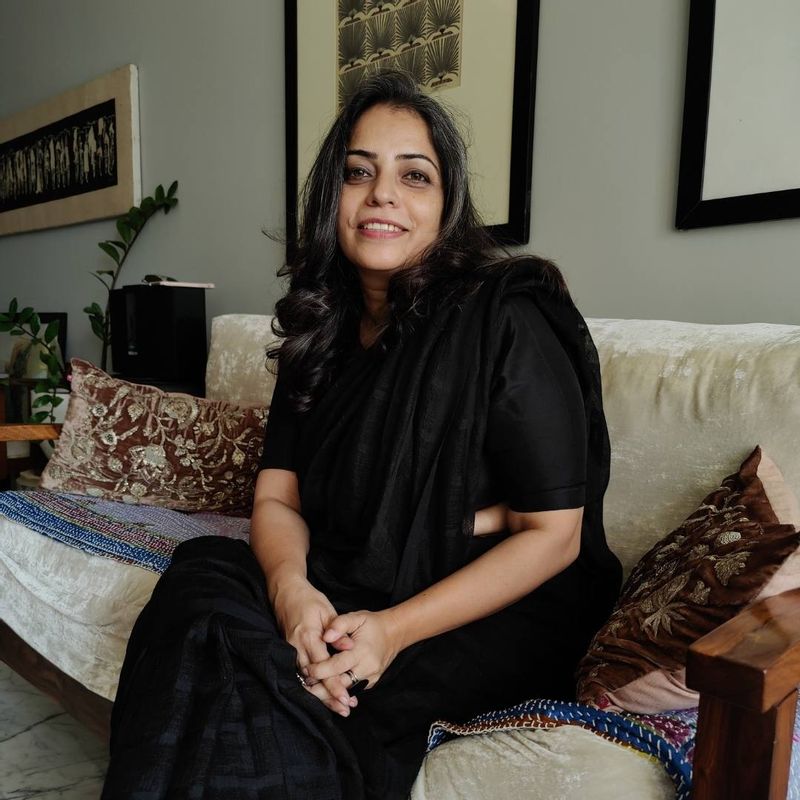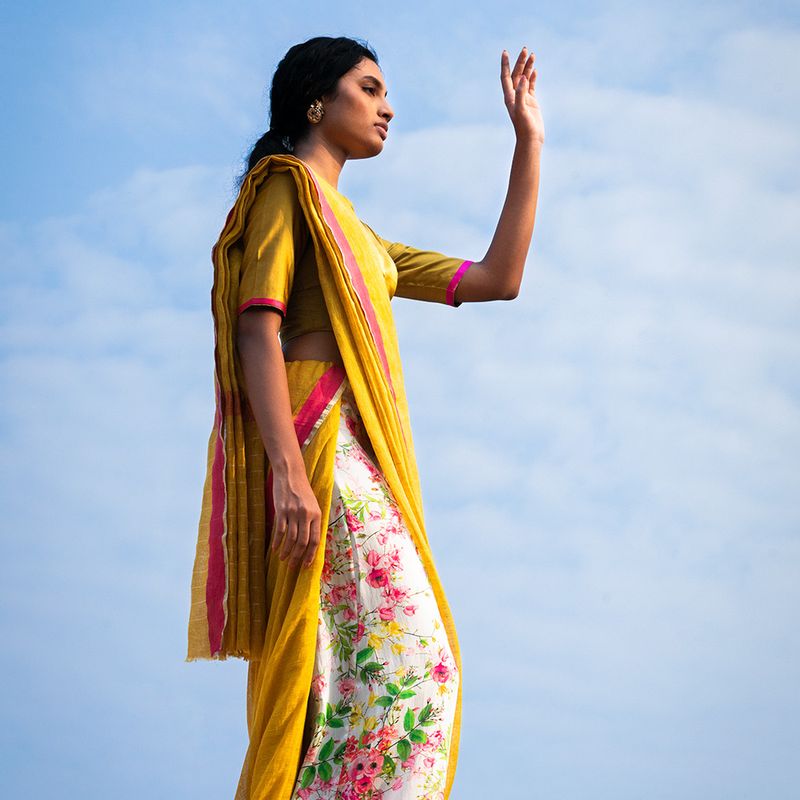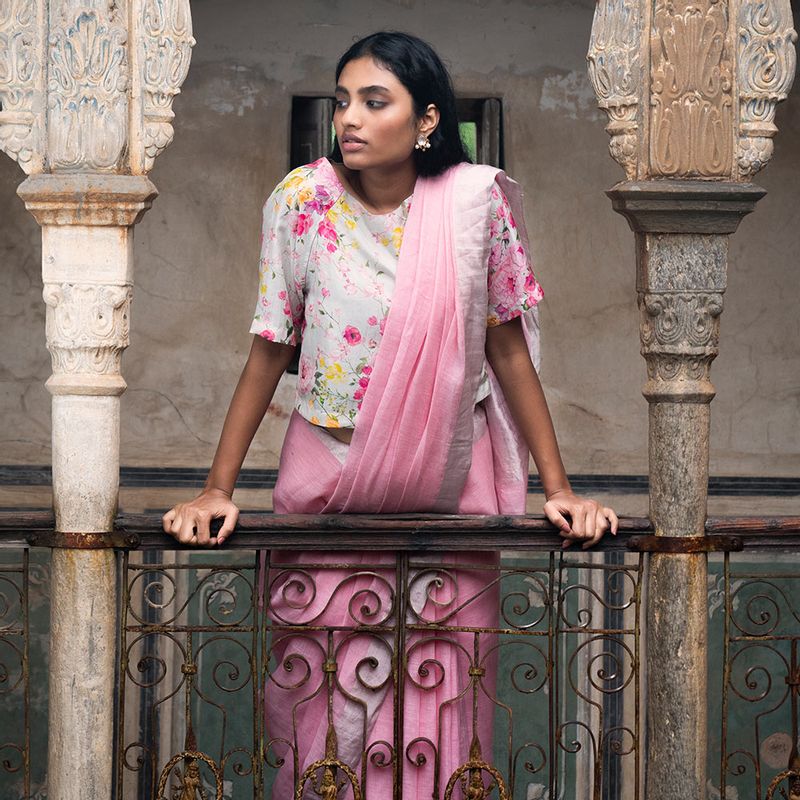At first impression, Anavila Misra may come across as soft-spoken, but it’s her work that speaks volumes. Championing the cause of the saree ever since she started out in the early 2010s in an attempt to redefine the India Modern aesthetic, her designs and minimalistic sarees have won man hearts, who couldn’t get enough of the ease and comfort of her creations. Interestingly, while they’re characterised by vibrant hues, rich textures and master craftsmanship, her sarees exude understated elegance with linen as the fabric de rigueur and mindful fashion with organic materials and sustainable practices as its inherent leitmotif.

We recently picked the brains of the designer on her latest collection and the latest styles to sail through the wedding season.
Edited excerpts
1. Your latest collection Morakasi is inspired by the beauty of Shekhawati Havelis. Tell us a little about what went on behind the scenes.

The inspiration behind this collection was Shekhawati. Of course, the architecture is one part of it, but I was inspired by the whole flavour of Rajasthani culture—the music, pictures and colours. These havelis are an integral part of Shekhawati and date back to 200 and 300 years ago. They were built by the merchants of that era and were beautifully decorated. It was an important part of their life to show how well they were doing through their decoration. What struck me was that whether it was the frescoes, the glasswork, the paintings, the woodwork or the metalwork, everything was so personalised. Even the colours beautifully flowed from pastels to bright Rajasthani colours. Interestingly, the patterns went beyond local flowers and showcased English flowers due to colonial influences. I think this was the time when there was a lot of attention on how you lived. When you talk about the slow life, this is how it was. I felt like I was peeping into the past.
2. What is your process like when you’re starting a new collection?

I do two seasonal collections—the festive line in August and the summer line in March. My first step is to look at the past three-four seasons and see how we’ve graduated. We have a lot of repeat clients so it’s important to see what’s in their wardrobe already. We create pieces that either complement or extend that line. I always work with a theme–it helps me put the collection together in a wholesome way. I also give thought to how we can extend the gold and silver work into sarees. We use zari in patterns, in the warp and weft itself or decorate with it. We also look at past silhouettes. For instance, the Garden shirt from our last collection did so well that we took it forward to the festive line. It was so comfortable—most clients bought it in all colours!
3. How do you achieve the textures that are so distinct to your creations?
This is because we have the freedom of working on the handloom due to which we are able to create in smaller quantities and experiment. I think the credit goes to the weavers I work with—they’re always open to my ideas. Designing for me is an on-going process of creating textures with the artisans. We work on textures two years before a collection. Colours and patterns come later. That’s how much time we take on the loom. The textures are achieved by mixing yarn—linen is the base for most of our textures, but we pair it with different yarns. We create a detailed mood board and closer to the season it goes into weaving.
4. Another one of your interesting creations is your dolls. Tell us about these.

It started with me not wanting to give a plastic toy to my niece who was 6 at the time. This took me back to my nani who used to make rag dolls—she taught us most of our hemming, stitching, and embroidery. Every time she’d come during holidays, we’d be making things with our hands. I always hear that the younger generation does not wear sarees–but it’s not fair because they’ve not been introduced to them. Even their moms wear western clothes and they see the saree as occasion wear. So, we decided to make it more play—you have these dolls that you’re dressing up and unknowingly the garment makes an impression. You’ll develop a curiosity and ask questions about it. It’s a subtle way to introduce sarees at a young age. We had an event with the dolls where we called young girls aged 4-7 to dress up the dolls. We thought we’d engage them for 10-15 minutes, but they were there for 1.5 hours. It gave us the insight that they haven’t been introduced to sarees. Busa (the name for our dolls) in Sanskrit means little sister and was created as a partner who introduces you to Indian textiles, slow living and doing things with your hands.
5. What are the other ways in which Anavila has tried to make the saree relevant to the younger generation?

Our campaigns always showcase the saree as an easy garment. The imagery that we create is of comfort. For example, in our Morakasi campaign, you’ll see raglan blouses. The imagery is always about movement and comfort. We once even showcased a formal saree with sneakers. We want to communicate that you can take a saree and wear it with whatever you have in your wardrobe. There’s no fixed way of wearing a saree—which makes it so much more relatable. I’ve actually had young girls coming to me and saying that they’ve seen these photographs and now want to wear a saree.
6. That brings us to our next question. What are some new and interesting ways of draping and styling a saree?

In the past we’ve done something called peeking petticoats—it’s like wearing a saree over a skirt. You’re showing varieties of how things can be done. A lot of draping styles come from areas where women wear sarees on a daily basis—these are the women who know how to manoeuvre the saree for their comfort. Those are the best examples of how you can carry the saree. We want to remove the mental block that sarees make you immobile.
7. What is the correct way of storing sarees?
Different fabrics need to be cared for differently. It’s however important to open them, air them and change their fold. Also, make sure you never put them in the washing machine—especially the hand woven varieties!
8. What are the biggest wedding trends this season?

Metallic sarees with a lot of sheen will always be in. In terms of colours, red will always be around for wedding season in India—we’re seeing variations like bright salmon and coral. I’m also seeing a lot of green—a colour I personally love. Bright shades like bright aubergine and the red colour family are other options. For blouses, I’m seeing zari and metallic blouses. Choli cuts are also in.




